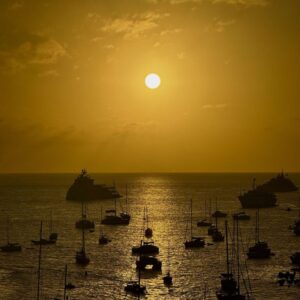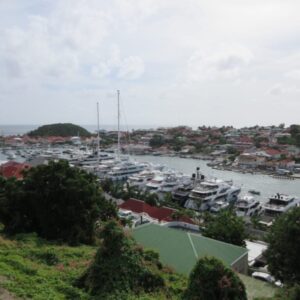St. Maarten Weather Information
Present weather situation and forecasts for St. Maarten :
- Get daily & 6-day weather forecasts for St. Maarten, Saba and St. Eustatius via Facebook
- Detailed weather forecast for St. Maarten
- Click here for any alert and updates on tropical storm depressions or hurricanes in the region around St. Maarten
- Click here for the latest satellite image of the Atlantic
- Click here for the latest satellite image of the Caribbean
Please find below some websites with up-to-date information and tracking maps on Tropical waves and Hurricanes as well as a site with step-by-step tips for before, during and after a tropical-related storm(s) or hurricane(s):
- Weather Service of Country St. Maarten – http://www.meteo.an
- Weather Underground – http://www.wunderground.com/tropical
- Caribbean Hurricane Network – http://www.stormcarib.com
- National Hurricane Center – http://www.nhc.noaa.gov
- SXM Cyclone – http://www.sxmcyclone.com
Hurricane Seasons
The North Atlantic hurricane season starts on June 1 and ends on November 30, with the most active months being September and October. However in the last few years which have been very active, we have seen some very early and very late season hurricanes, from Bertha in July ’96 to Lenny in November of ’99.
St. Maarten has been hit 6 times by hurricanes in the last 20 seasons, 3 of those being major hurricanes. It started in ’95 with Luis and Marilyn, Bertha in ’96, Georges in ’98 and Jose and Lenny in ’99. Besides causing major wind damage St. Maarten has been experiencing major flood and slide damage, some thing that we were not used to on the Friendly Island.
Development
Weather disturbances develop off the coast of West Africa and travel over the Atlantic Ocean into the Caribbean. These weather disturbances are fueled by hot ocean water and can turn into powerful cyclones. Hurricanes look very impressive on satellite images, but their actual size is somewhat more compact with only a width of about 50 to 80 miles wide that has the power for true destruction. On a geographical scale this is a relatively small area.
Hurricanes develop from a variety of tropical weather disturbances and pass through several increasingly intense phases classified as:
- Tropical wave, a cyclic curvature in the Easterlies with surface winds less than 20 mph.
- Tropical depression, surface winds 20 – 38 mph.
- Tropical storm, surface winds 39 – 73 mph.
- Hurricane, surface winds in excess of 74 mph.
Categories
Once becoming a hurricane they are again categorized according to windspeed (wind barometric pressure) in the socalled Saffir-Simpson intensity scale:
- One: winds 74 – 95 mph
- Two: winds 96 – 110 mph
- Three: winds 111 – 130 mph
- Four: winds 131 – 155 mph
- Five: winds 156 – up mph
A category three and higher hurricane is considered a major hurricane.
Hurricane Names
When a tropical depression becomes a Tropical Storm they are named. There is a list of names that covers 5 years and will be used on a rotational basis. When more storms develop in a given year than the number of names in the relevant list, the Greek alphabet (Alpha, Beta etc.) will be used to name the subsequent systems. If a storm acquires special notoriety because of its strength, deaths, damage or special reasons, its name may be withdrawn at the request of any member of the agreement at the session of the RA IV Hurricane Committee.
What To Do If Caught In A Hurricane On St. Maarten
In case of a major hurricane and a direct hit to the island while you are vacationing, the resort you are staying at should advise you about safety procedure. All resorts can handle the high winds, but you might be inconvenienced by spotty power services, no water pressure and cut-off communications.
All major resorts have full generator back-up. Some even their own water plants. Will your life be in danger? Not if the past hurricanes hitting the island are an indication. Only a fool will explore the beach in the middle of a blow or roam the streets. Once you stay indoors and let it “blow over”, you will be okay. Just don’t be on a boat. Its no fun to support a boat’s effort to survive a storm.
Hurricanes of categories 1 and 2 should not do more than ruffle the region’s feathers a little. Category 3 is more serious and if you experience it on island, you might have several days of bad weather and a lot of beach erosion. The damage of categories 4 and 5 can’t be predicted anymore, but we believe St. Maarten will survive much better than most other islands in the region.
Bottom line: In case of a storm, play it safe and listen to resort management. But there is no reason to avoid our beautiful Caribbean island during hurricane season. The slight risk of having bad weather is certainly set off by the much, much lower prices during this part of the year.
Source: http://www.airsxm.eu/page.php?page=91
Links






